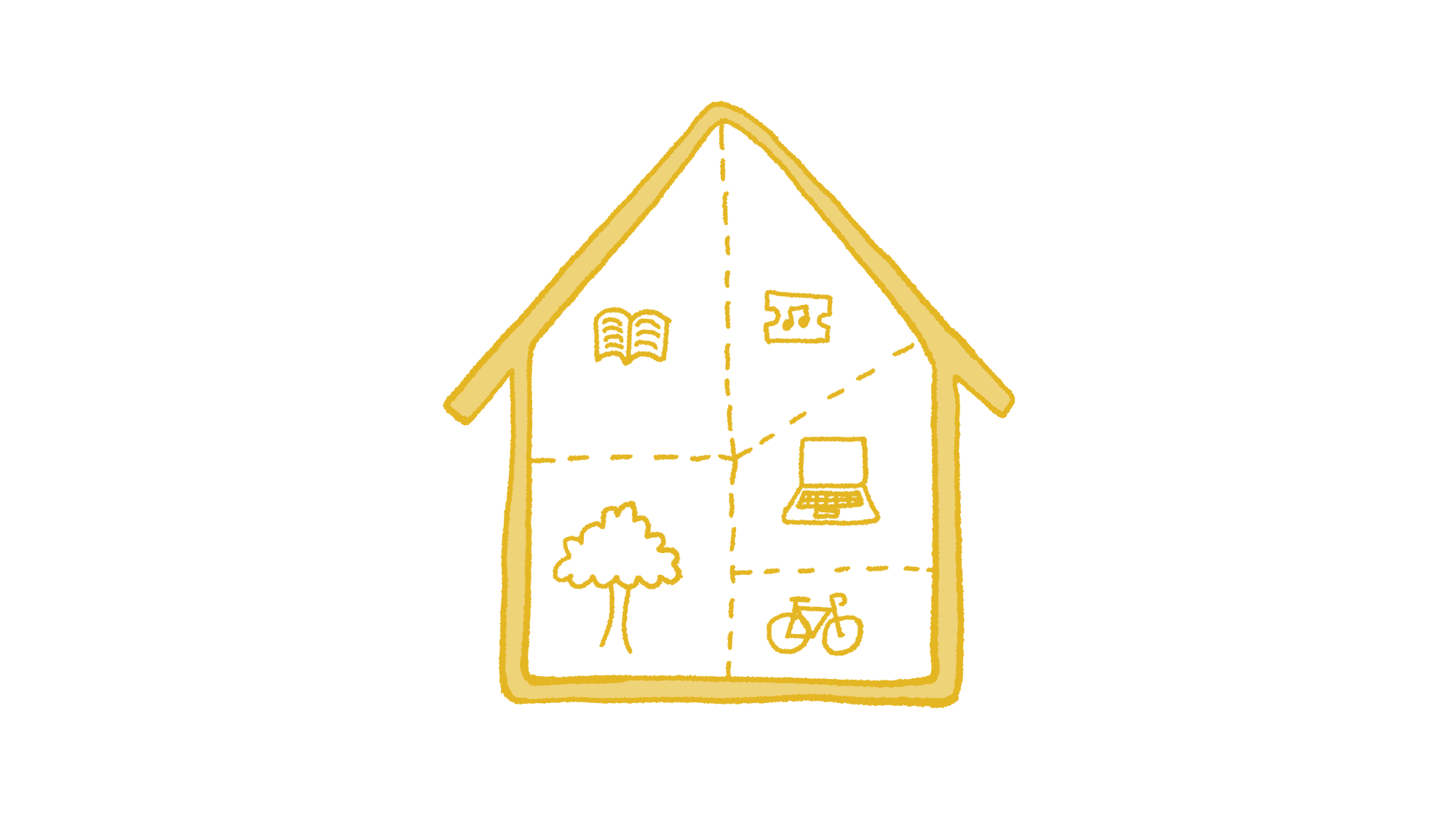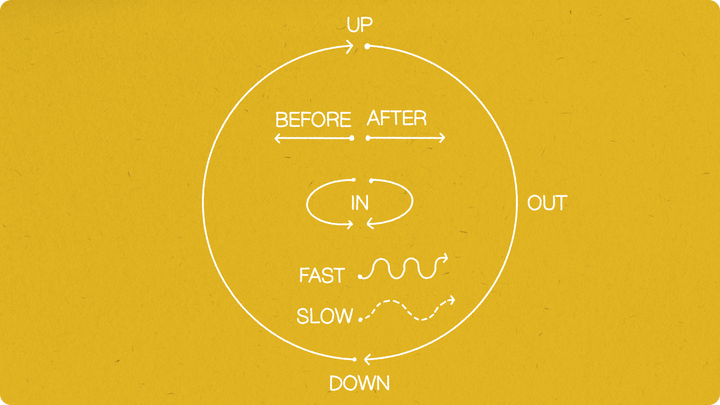The Great Lifestyle Unbundling
What if our built environments offered us experiences similar to our digital environments? An evenly distributed array of private, social, work and life.

Housing: The Pulse of a Population
I wanted to write about housing because it is a particularly hot topic. Not only now, with the housing crisis, but as a globally important part of human life. A house, in an individual life, is often our greatest asset. We all care deeply about our home. Choosing where to live affects where we work, how we live and spend our time, and has effects on our health. Housing is also important for the broader economy because it defines the location and supply of people, a society's most important resource. Housing is a reflection of the self as much as it is one of greater society.
Housing is a reflection of the self as much as it is one of greater society.
The pandemic and the rise of remote work have brought forth unprecedented levels of loneliness, heightening our need for community and connection. The city has traditionally been more well suited to offer that. But what we're seeing is that cities are bursting at the seams and have become unaffordable for the typical middle class.
We should also consider the increasing proportion of life online which, beyond the loneliness we can also attribute to it, has habituated us to being in (digital) environments where all facets of life are continuously unfolding before us in the same centralized places. A little bit of everything, all of the time. (didn't mean to quote Bo Burnham's Welcome to the Internet song on this initially, but there's definitely a parallel to be drawn here) We got used to, through our digital places, the ability to jump context seamlessly. Everything is always one tab away. Online, we get it all; private and social moments in work contexts, private and social moments in personal contexts, and private and social moments in public contexts.
So it's through this combination of the pandemic, remote work and the growing proportion of life online that I believe we have come to The Great Lifestyle Unbundling where we require home, work and leisure all at once. Increasingly, we need our built environments to give us more. More of that variety and density. More of everything, every day.
Mythbusting Suburbia
So, back to housing. Recently, we have seen strong migrations; people are moving away from city centres. There are multiple reasons for this. Of course, the pandemic made a lot of us realize that expensive rent might not be as worth it as we used to think. There's also the rise of remote work; less of a need to be centrally located. And there's the fact that housing has just become too expensive for people to even move to the city in the first place.
What lies beyond the city? The suburbs. We are finding younger millennials and Gen-Z'ers along with aging boomers and empty nesters unsatisfied with the offerings of suburban neighbourhoods for, luckily, the same reasons.
On top of the isolation brought forth by the pandemic and the rise of remote work, households nowadays tend to be made of 1 to 2 people. This leads to more loneliness which clashes even stronger with the suburbs' original selling point of privacy. This is what's currently being observed as “suburban retrofitting”.
We're looking for more than what the broader urban landscape has to offer. The myths of the suburbs no longer hold true. The need for privacy, car-first mobility, and family-oriented housing are no longer the priority over, say, urban amenities. Younger and older generations alike want more walkable, compact and mixed-use urban places.
These concepts are nothing new. They sound a whole lot like the principles Danish architect Jan Gehl has encouraged a whole generation of urbanists to pursue. Gehl says that a good city is one that is built around the human body. Both physically; we were created as a walking animal, and mentally; we are curious and social creatures who need our senses and neurons stimulated.
Younger and older generations alike want more walkable, compact and mixed-use urban places.
Density as Antidote to Loneliness
Beyond Gehl's human scale, walkable, compact, and mixed-use environments are all things that provide density. And what is density, as far as urbanism is concerned? Density is the antidote to loneliness.
In the US, zoning laws have shown to be an major inhibitor to developing what's been coined the "missing middle"; i.e. housing that affords denser population like duplexes and quadplexes or mixed-use residential and commercial units. Compared to particularly dense Japanese and European cities, the US has historically been in a position where it was better to spread the population than densify it. American urban planners are fighting those very zoning laws even today.

Density in cities is also what brings innovation to societies. Particularly because of our current "intangible economies". Industries like technology, whose assets are software or intellectual property, greatly benefit from the buzzing city life. Geographical closeness and diversity encourages productivity, creativity and cross-pollination.
The Switch of Affluence
In the end, these are all wonderful things to want from a built environment, but they require one thing in common to make them happen. The cultural switch from private affluence to public affluence.
Private affluence represents the more traditional values of ownership and individualism. Think of it as everyone owning a car rather than opting for public transit. Private affluence has shown to lead to more inequality, negative impacts to the environment and a lesser sense of community. Public affluence, on the other hand, addresses more modern concerns; public service, commons and a sharing economy. It is when more money is poured into shared amenities like parks, libraries, and greener streets. All things that work towards lowering inequality and increasing the sense of belonging, responsibility and accountability.
In the end, people are finding themselves in a position where they need to rely on their environments to fight the loneliness. We need more from our built environments. For example in the workplace, employers no longer opt for cubicles. We need the same density and activity as the city inside the workplace. "Younger workers don't want to work in a place that is only "work"."
A New Reality
A couple generations past, the norm was to have a house to live in and a place of work to commute to, be productive in and come home from in the evening. Nowadays, digital culture has accelerated a phenomenon where the lines between work and play and life are all blurred. On social media you get as much world news as you get baby pictures from close ones, within the same scrolling gesture. Our phones are the very same devices we use to track our health, our work tasks, and our conversations with people from all of our circles.
The older conception of public space doesn't fit the new narrative. Younger generations no longer see life as linear checklist of study-work-retire in the same way as our parents and grandparents did. It used to be neatly separated in time-bound chapters. Now, we lead hybrid lifestyles where there's labour and leisure at every stage.
Our new reality is that university is less a given; the highest paying tech jobs won't even ask about your education.
Our new reality includes digital nomadism. Now that work doesn't tie us to any particular geography, asynchronous work has enabled whole new communities with unique housing needs.
Our new reality is the need for a work station inside our homes or at least access to shared workspaces within walking distance of the home.
Our new reality is also the calling of nature. But for a lot of us, we only want those things some of the time; tiny homes, co-farming, off-the-grid cabins.
Our new reality is the realization that life is broader than what we've been taught. We're experiencing a greater need for stimulation, for change, for variety. Potentially, it is the Internet that has taught us that such broadness and scope even existed, or at least let us understand it more deeply.
It used to be neatly separated in time-bound chapters. Now, we lead hybrid lifestyles where there's labour and leisure at every stage.
Harvesting the Crops
It's as if past generations have successfully done the hard work of the industrial era; facilitate production, raise the living standard, make life more comfortable for everyone. And yet we don't seem to be wanting to put an end on that ever-growing curve. Okay, we've done the innovation, we've done the productivity, isn't it time to enjoy the harvest a little?
This borrows from author Jeremy Williams's concept of "arrival". He describes it as "the reality that in the world’s richest countries, decades of economic growth have already achieved what previous generations hoped for. We have arrived, and it’s time for a new challenge — how to make ourselves at home with this prosperity, and make sure that everyone is included."
Arrival & Degrowth
I really like this concept of arrival because it offers a very strong basis for degrowth. How far must we go? Just how infinite do we need infinite growth to be? There's a difference here between want and need. Die hard capitalists would undoubtedly want true infinite growth. And ecologists, on the other hand, would say we most certainly do not need a dime more. But what about the people? Those who struggle to pay rent in the cities where the most opportunities are? Those who are dependant on their car to clock-in to their minimum wage jobs; a minimum wage which doesn't let even them afford said car? Those who will crumble under student debt until long after they have kids?
Growth has always been about privatization, enclosures and departmentalization. The narrative used to be about keeping things very separate; a private home for your family in the suburbs, each family their own car, each individual their place of work in a closed cubicle. As if the whole society needed these compartments in order to properly focus on production. We've needed a clear separation of life and labour in order to achieve these goals. We've needed pure sweat-and-blood labour.
Haven't we evolved past that? It's more than time to zoom out and start defining ourselves at a higher standard of humanity. A standard where the built environment offers us a more hybrid mix of solutions rather than life in the suburbs and work in the city. A standard where life is better suited to cover all of our needs. I'd argue that joy needs to be more evenly distributed. All of life should happen every day and the built environments we get to choose to live in should provide us with this variety. Labour and leisure and everything in between.
All of life should happen every day and the built environments we get to choose to live in should provide us with this variety.
Further reading
- The housing theory of everything, by Sam Bowman, John Myers and Ben Southwood for Works in progress
- Every child on their own trampoline, by Jeremy Williams for The Earthbound Report
- The People the Suburbs Were Built for Are Gone, by Shayla Love for Vice's Motherboard
- How '15-minute cities' will change the way we socialise, by Peter Yeung for the BBC
- 5 Rules for Designing Great Cities, From Denmark's Star Urbanist, by Diana Budds for Fast Company
- People Hate the Idea of Car-Free Cities—Until They Live in One, by Andrew Kersley for WIRED
- What Is Public Affluence, and Why Does It Matter, by Jeremy Williams for his blog The Earthbound Report
- Degrowth and the City, by Angelos Varvarousis and Penny Koutrolikou for e-flux
- Stockton’s Basic-Income Experiment Pays Off, by Annie Lowrey for The Atlantic



